Optical Luxury: Steiner T5Xi 3-15×50 Riflescope
Tom McHale 09.08.17
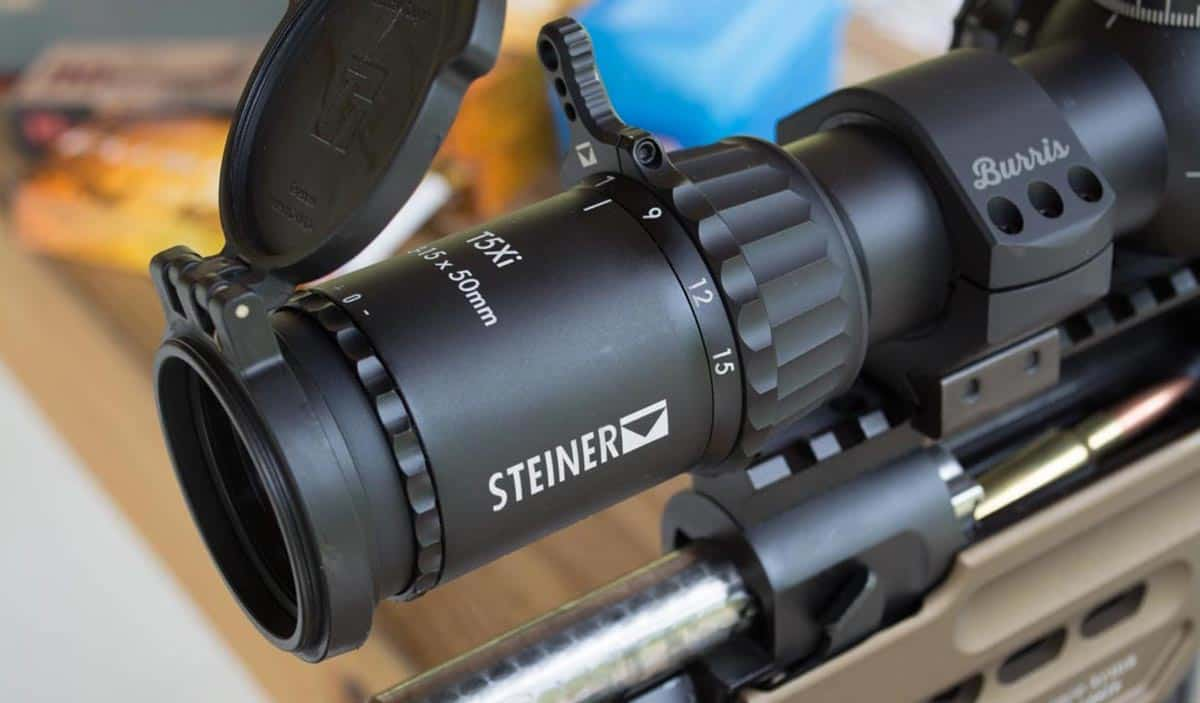
You know the old saying: “You get what you pay for.” One product category where that is shockingly evident is rifle optics. After you’ve looked through high-quality glass and fiddled with precision-machined components, you’ll never want to go back.
Top-end gear isn’t cheap for a reason. It works exceptionally well and through hellish conditions. Here I sit with a brand-new Steiner T5Xi scope on my desk, trying to figure out how to fake my own death so I don’t ever have to send it back. If anyone has any ideas, I’m all ears. In the meantime, let’s take a look at this scope.
The model we’re checking out is the T5Xi 3-15×50. As the name implies, it’s a variable power model with 3 to 15 power magnification. The objective lens is 50mm while the main tube body is 34mm. Yes, it’s a beast. According to Steiner, this scope has 174 different parts, including 17 different lenses inside. I didn’t take it apart to verify that claim — I’ll trust them on this one.
The parallax adjustment shares the same location as the reticle illumination control; it’s just closer to the scope body. That ranges from 25 meters to infinity, with the last measured distance being 800 meters.

The eyepiece has a locking ring for the reticle focus dial. Just unlock the ring, point the scope at a plain background such as clouds or sky, then take a quick look to see if the reticle is in focus. Don’t stare too long as your eyes will make adjustments on their own. If the reticle is out of focus at first quick glance, then adjust the eyepiece and repeat until it’s clear. Once you have it perfect, tighten the locking ring by hand, and you’re permanently set. Of course, if you let someone else shoot, they may need to readjust.

The reticle is illuminated, but only in a “T” shape below and to the sides of the center crosshair. That keeps your field-of-view above the crosshairs unobstructed by any light or glare if you have the illumination turned up high. There are 11 different brightness settings, and between each level is an off position. That configuration allows you to be one click away from your preferred setting but with the illumination turned off. The first four settings are night vision compatible, then the next three are good for night or low-light operation. The last four settings work well in daylight conditions. The illuminated reticle is powered by a CR2450 battery. If you forget to turn it off, no worries; there’s an auto-off feature that kicks in after 3 hours. If you’re a sniper and have to camp out behind this scope for hours at a time, you can disable the auto-off feature.
There are a couple of other “nice touches” in the box. A throw lever comes with the scope that matches the color and texture of the magnification adjustment dial. If you want to use it, just slide it over the rear of the scope into position and then tighten it down using the enclosed hex wrench. I found that setting the lever on about “7” on the magnification ring gave me a throw lever travel from horizontal on the left, over the top, to horizontal on the right. That kept it completely out of the way on the bolt handle on the rifle I used for testing. Once I put it on, I had no desire to take it off, even though the magnification adjustment ring moves pretty easily without the lever. It’s a nice little touch.
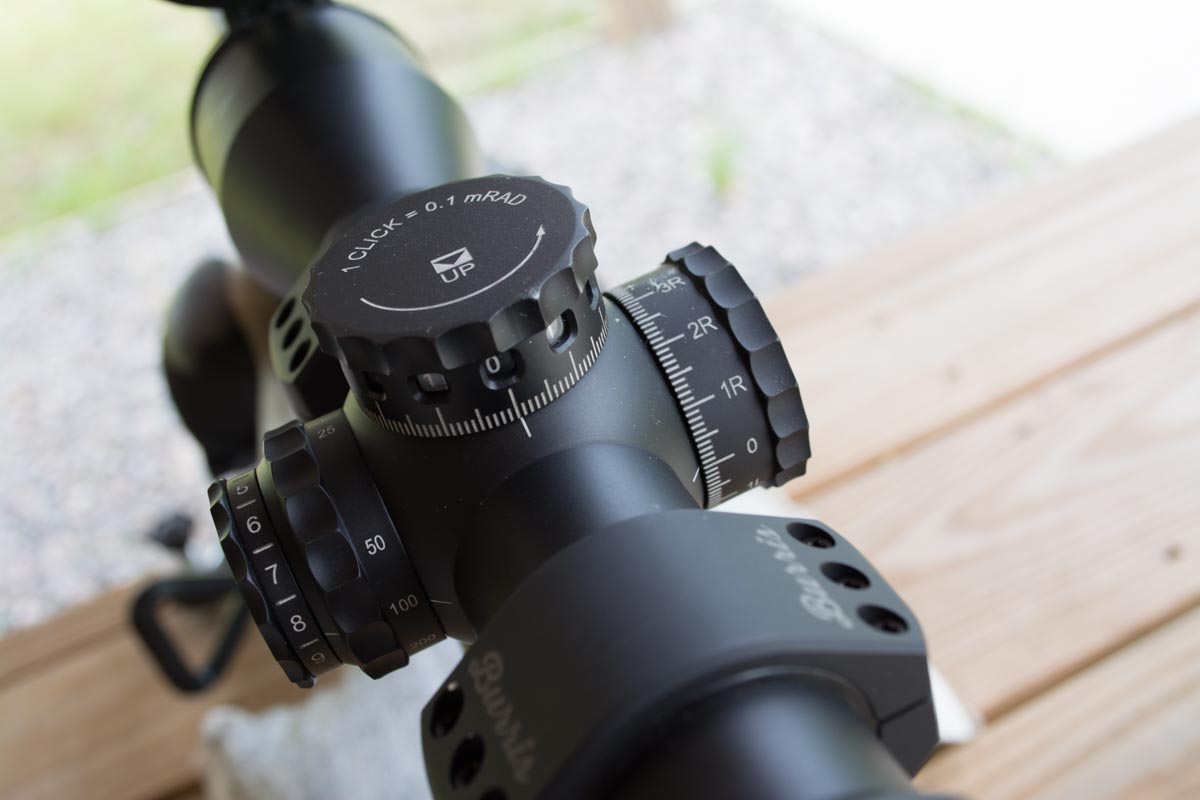
There’s also a sun shade that screws into the objective end. It’s about 3 inches long, and besides looking exceptionally cool, it’ll help reduce glare on sunny days. Last but not least, the T5Xi comes with flip-up lens covers. The outer plastic/rubber rings snap onto the eyepiece and objective lenses and stay in place pretty well. From then on, just flip the covers, and they’ll stay open until you snap them closed again.
The turrets on the T5Xi are exposed and meant to be used in the field for competition, tactical shooting, or even hunting if you like. The quick take on the turret system is that it will spoil you rotten. Here’s how it works.
Each whole milliradian is shown as a number through windows on the dial. If you need to move from 0 to 4 mils, you can do things the old fashioned way and count clicks, or you can spin until you see a big “4” in the window over the position indicator mark. Most other scopes have those numbers printed on the dial itself, and that’s fine, as long as you never have to make an adjustment over one revolution of the dial. Once you do that, it quickly becomes a challenge to figure out where you are. Yes, some scopes use horizontal lines below the turret cap to show you what revolution you’re on, but that approach has never worked well for me. It’s confusing, hard to see, and slow. The window approach allows those clever Steiner engineers to show the actual number of mils once you get into your second revolution.
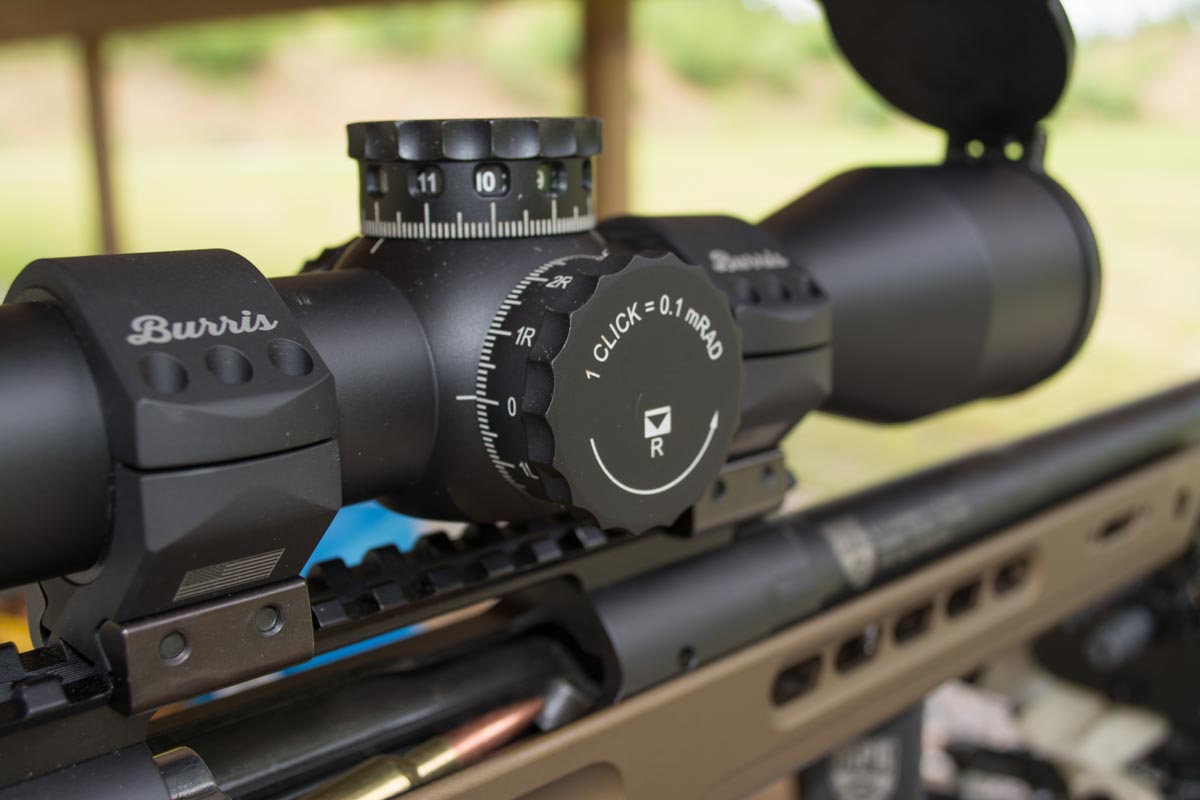
For example, on this scope, if you look at all of the windows without moving anything, you’ll see the numbers 1 through 11 in their respective windows. That means that one full rotation will provide 12 mils of adjustment because the 12th ends back at zero. But here’s the neat thing: Right when you spin to about 11 1/2 mils, the numbers in the windows change to 12 through 23. Just like magic. So, if you need 14 mils of adjustment, there’s nothing to remember, just spin until you’re looking at a big and bold number 14. Get the idea? Now when you need to go back to 0, you don’t even need to look because there’s a zero stop. The dial physically comes to a halt at 0 minus three clicks, so you always have a bit of downward adjustment if needed. It couldn’t be simpler or faster. The word is that this scope was in part designed by a group of competitive shooters, and it shows from features like this.
To set up our zero and the correct zero stop, here’s what you do. First, zero your scope at your preferred distance. For convenience, I did this at a distance of 100 yards, but for long-term use, I’d probably stretch that out to 200 yards with the rifle I used here. Don’t forget to adjust the parallax dial on the left side of the scope to your shooting distance. Once you have groups printing in the center of the crosshairs, you’ll want to set the dials to read 0 for both windage and elevation. Using the supplied hex wrench, loosen two hex screws in each turret cap exactly one-half turn. That allows you to rotate the dials back to read 0 without making any internal scope adjustments. When the dial shows 0, tighten those hex screws, and you’re done. It’s a really simple process.
The SCR (Special Competition) reticle on the T5Xi is a rifle geek’s delight. It’s a first focal plane design. That means that the reticle grows and shrinks as you change magnification. Here’s why that’s important. If (being a rifle geek) you like to do things like figure out range of targets or even just hold over instead of making turret adjustments, it matters not a whit what magnification level you’re on. Everything works the same. With less-expensive second focal plane scopes, the reticle is always the same size, but you need to be at a certain magnification level (usually the highest) for features such as holdover and ranging to be consistent. The reticle is extremely fine, so it’s easy to be precise. The graduations on both the windage and elevation scales are measured in mils and fractions of mils. There are billions of them. Okay, maybe not billions, but if you want to estimate range using the marks on the reticle, you have indicators for everything from .03 mils up to a whole milliradian.
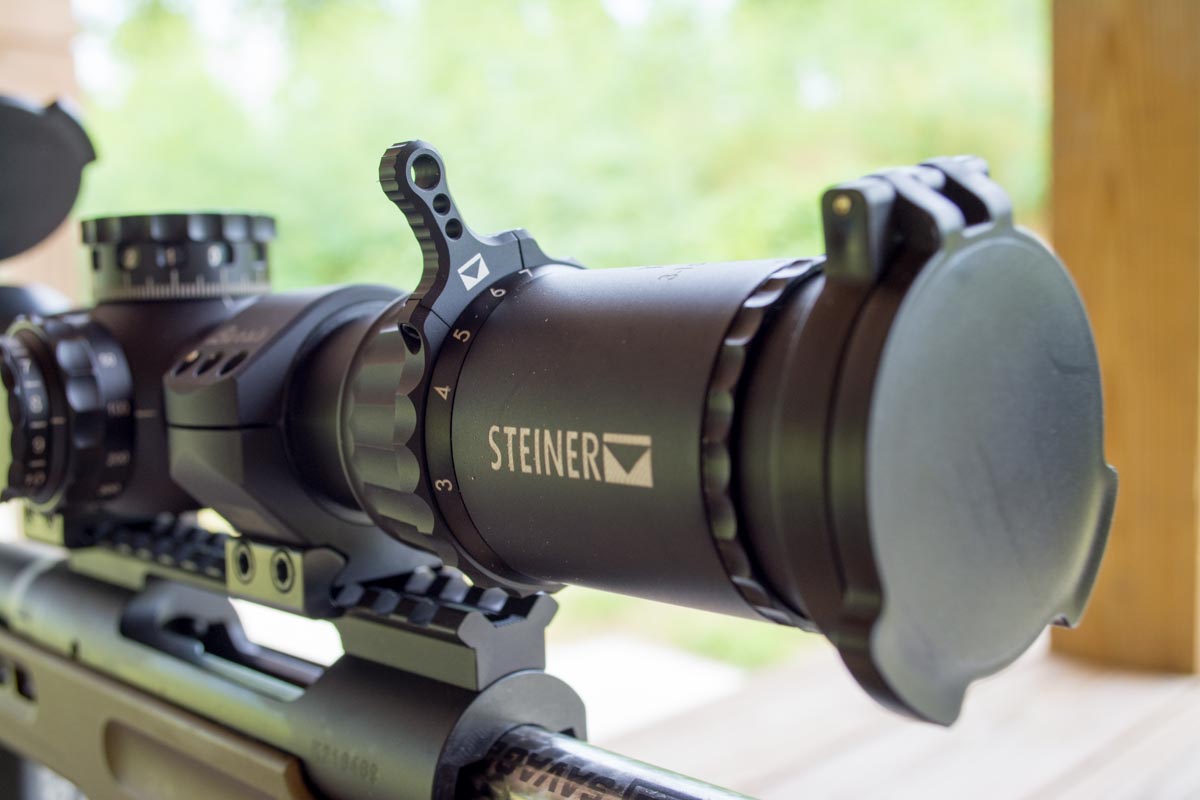
For example, instead of making a guesstimate, you can use these precise marks to figure out that a distant object appears exactly 2.30 mils tall and calculate range accordingly. When at full magnification, the elevation reticle is visible all the way down to 12 mils so you can hold over that much if you like.
For field testing, I decided to mount the T5Xi 3-15×50 scope on a suitable platform. I have a Masterpiece Arms MPA BA Lite competition rifle chambered in 6.5mm Creedmoor. This particular model was designed to meet production class requirements of the Precision Rifle Series. That’s a price point limitation, so this rifle carries an MSRP of $1,999.99. Built on a Remington 700 short action with a Bergara honed barrel, it’s accurate. Ridiculously accurate. I’ve taken to calling it a “heartbeat rifle” because if you don’t manage your shot between heartbeats, you’ll blow your group. With the right ammo, this one prints five-shot groups where everything touches if you do your part. Anyway, I figured it would be a good match for the high-end T5Xi.
Given the nature of this scope with its target turrets, I wanted to test its turret adjustment calibration and repeatability. After all, the T5Xi is designed for the user to dial in settings and return to 0 perhaps as frequently as every shot. To see how the T5Xi performs this way, I set up a standard box test with a minor revision. Using a target 100 yards downrange, I fired the first shot at the bull’s-eye. I then wanted to form a “box” of bullet impacts around that center hole, and on the last shot come back to the center. Basically, it’s a square pattern, but with the first and last shot directly in the center of the box. To stay on a target backer at 100 yards, I decided on “drawing” a box with each side measuring 4 milliradians. Converted to inches, that’s about 14.4 inches per side.
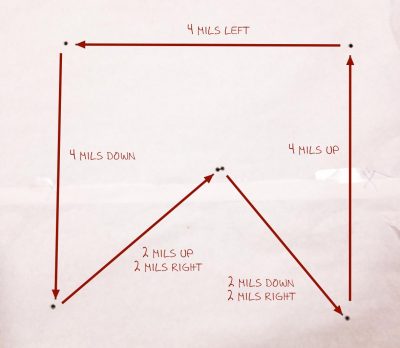
I used some proven handloads for the box test that I whipped up with Sierra’s new Tipped Matchking 130-grain 6.5mm bullets. I fired the first shot at an aim point in the center. Since I wanted to shoot the bottom right corner next, I spun both windage and elevation turrets exactly 20 clicks or 2 milliradians. The T5Xi uses .1 Mil click adjustments, which translate to .36 inches at 100 yards. Since I was starting in the center, I only had to move two mils down and two mils right to start the first corner of my box. Again aiming at my initial aim point, I fired another shot. Remember, the idea was to fire everything at the same point of aim but move the impacts around the box using scope adjustments. If the scope is precise and has repeatability, the process should form a perfect square with two shots exactly in the center. For the top-right impact, I just moved up 40 clicks, which were exactly 4 mils. After firing again, I moved the windage left 40 clicks then shot again. Next, I went down 40 clicks and fired. Last, I moved back to the center by going up 2 mils (20 clicks) and right 2 mils.
As you can see by the photo, the process created an amazingly consistent box pattern. After all that adjustment, the scope came right back to its starting point. I know this because the first and last shots were touching. That’s impressive and not something you find in a budget scope. The other thing that stood out during all this adjustment was the precision of the clicks. Each movement of the dial was distinct — you could feel it, and I didn’t have any trouble getting lost counting clicks. Lesser optics can have a “mushy” feel, which makes it easy to lose track of how much you’ve moved.
The Steiner T5Xi with the SCR reticle shown here retails for $2,275, but you can find it in stores for less than $2,000. You can also order the T5Xi with a Horus H59 reticle, and that adds about $500 to the price tag.
Like I said previously, you get what you pay for — especially in riflescopes. And this T5Xi is exceptional.

